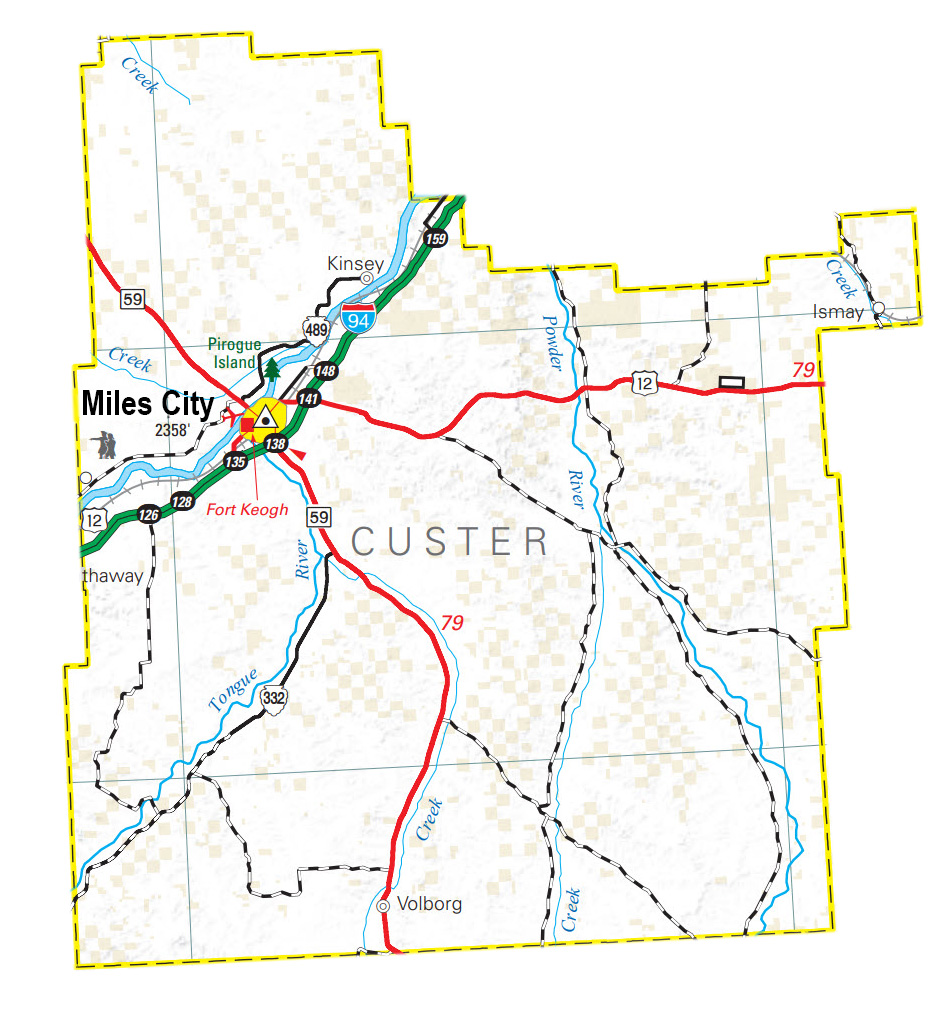
As of July 2021:
Population — 11,971
Population per square mile — 3.1
Persons under 18 — 20.3%
Veterans — 884
Owner occupied housing unit rate — 66.3%
Households — 4,872
Person per household 2 — 37
Households with computer — 92.1%
Mean travel time to work — 12.6 mins.
Land area in square miles — 3,783.31
Miles City is the County Seat of Custer County Montana. Along with its rich western history, it boasts being built at the convergence of two historic rivers: the Yellowstone and the Tongue. Beautiful downtown Riverside Park has picnic areas, baseball fields, a large freshwater swimming area – complete with ducks, and Connors Stadium. The lush park hosts antique car shows, farmers markets, guest entertainers, plays, regional and state sporting events and much more. A block from the park, Eastern Montana Fairgrounds hosts horse racing, demolition derbies, the internationally famous Bucking Horse sale and, of course, the annual fair with carnival rides, big name entertainment and fun foods aplenty. In Miles City, expect to find friendly folks in a beautiful town that graciously spans from the old west to the modern world. It’s a great place to visit, to live, or to open your business. Before all else, Miles city is a community.
When Custer County was formed, it was larger than the present state of Pennsylvania. It began shrinking in 1883 when Yellowstone County was taken out, and afterward lost pieces to Park, SweetGrass, Carbon, Rosebud, Fallon Wibaux, Prairie, Carter and Powder River. It is now the 10th in size in Montana counties.
Miles City is in the center of the great Yellowstone Valley of eastern Montana. Historically speaking, Miles City came into existence on the heels of the military expedition sent into the valley of the Yellowstone from Fort Leavenworth, Kansas – following the Battle of the Little Big Horn on June 25,1876, when General George A. Custer and his immediate command of five troops of the 7th Calvary were annihilated by the Sioux Indians led by Sitting Bull.
It is also interesting to know the origin of the community’s name. Colonel (later General) Nelson A. Miles, in command of six companies of the 5th Infantry stationed in the summer of 1876 at Fort Leavenworth, received orders to proceed to the valley of the Yellowstone in Montana and there to establish a cantonment from which he was to conduct a campaign designed to compel the wandering bands of Indians to return to their respective reservations.
Arriving in the early fall, Miles conferred with General Alfred H. Terry in command of the Department of the Dakotas, who was still in the field following Custer’s battle. Subsequently, he selected a site at the mouth of Tongue River on which to build the cantonment. The Army Engineers surveyed a tract of land ten miles square and established a reservation. It was just across this reservation on the east and on the south bank of the Yellowstone River that the first village was set up. A year later, when the War Department abandoned that portion of the military reservation lying east of the Tongue River, the village, figuratively speaking, moved itself, cabins and appurtenances to the present site. The new community was named “Miles City” in honor of the commanding officer at the cantonment.
